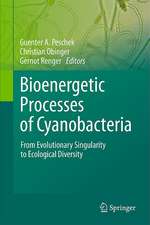Molecular Microbial Ecology Manual
Editat de A.D. Akkermans, Jan Dirk van Elsas, F.J. de Bruijnen Limba Engleză Paperback – 5 noi 2012
Preț: 400.65 lei
Nou
Puncte Express: 601
Preț estimativ în valută:
76.67€ • 79.75$ • 63.30£
76.67€ • 79.75$ • 63.30£
Carte tipărită la comandă
Livrare economică 14-28 aprilie
Preluare comenzi: 021 569.72.76
Specificații
ISBN-13: 9789401041560
ISBN-10: 9401041563
Pagini: 512
Ilustrații: XI, 494 p.
Dimensiuni: 160 x 240 x 27 mm
Greutate: 0.71 kg
Ediția:Softcover reprint of the original 1st ed. 1995
Editura: SPRINGER NETHERLANDS
Colecția Springer
Locul publicării:Dordrecht, Netherlands
ISBN-10: 9401041563
Pagini: 512
Ilustrații: XI, 494 p.
Dimensiuni: 160 x 240 x 27 mm
Greutate: 0.71 kg
Ediția:Softcover reprint of the original 1st ed. 1995
Editura: SPRINGER NETHERLANDS
Colecția Springer
Locul publicării:Dordrecht, Netherlands
Public țintă
ResearchCuprins
SECTION 1: Isolation of microbial nucleic acids.- 1. 1. Extraction of microbial DNA from aquatic sources.- l.1.2. Extraction of microbial DNA from aquatic sources: Freshwater.- 1.1.3. Extraction of microbial DNA from sewage and manure slurries.- 1.1.4. Methods for extracting DNA from microbial mats and cultivated micro-organisms: high molecular weight DNA from French press lysis.- 1.2. Extraction of microhial RNA from aquatic sources.- 1.2.3. Methods for extracting RNA or ribosomes from microbial mats and cultivated microorganisms.- 1.3. Extraction of microhial DNA from hulk soil.- l.3.1. Cell extraction method.- 1.3.3. Extraction of microbial community DNA from soils.- l.3.4. Small scale extraction of DNA from soil with spun column cleanup.- 1.3.5. Gel purification of soil DNA extracts.- 1.4. Extraction of DNA from phytosphere, rhizosphere, rhizoplane.- 1.4.2. Extraction and PCR amplification of DNA from the rhizoplane.- 1.4.3. Extraction of microbial DNA from the phylloplane.- 1.5. Extraction of RNA from bulk soil.- 1.5.1. Direct and simultaneous extraction of DNA and RNA from soil.- 1.6. Nucleic acid extraction from cultures.- 1.6.2. Extraction of ribosomal RNA from microbial cultures.- SECTION 2: Detection of microbial nucleic acid sequences.- 2.2. Preparation of radioactive probes.- 2.2.1. Preparation of radioactive probes.- 2.3. Preparation of non-radioactive probes.- 2.3.1. Detection of nucleic acids by chemiluminescence.- 2.6. Detection of microbial DNA sequences by colony hybridization.- 2.6.1. Detection of microbial DNA sequences by colony hybridization.- 2.7. Detection and quantification of microbial nucleic acid seque Polymerase Chain Reaction (PCR).- 2.7.2. Polymerase chain reaction (peR) analysis of soil microbial DNA.- 2.7.5. Detection of mRNA and rRNA via reverse transcription and peR in soil.- SECTION 3: Identification and classification of microbes usmg DNA and RNA sequences.- 3.1. Partial and complete 16S rDNA sequences, their use in generation of 16S rDN A phylogenetic trees and their implications in molecular ecological studies.- 3.1.1. Partial and complete 16S rONA sequences, their use in generation of 16S rONA phylogenetic trees and their implications in molecular ecological studies.- 3.3. Microbial identification and design of phylogenetic trees hased.- 3.3.1. Amplification of ribosomal RNA sequences.- 3.3.2 Bacterial community fingerprinting of amplified 16S and 16-23S ribosomal DNA gene sequences and restriction endonuclease analysis (ARDRA).- 3.3.4. Investigation of fungal phylogeny on the basis of small ribosomal subunit RNA sequences.- 3.3.5. Sequence Databases.- 3.3.6. In situ identification of micro-organisms by whole cell hybridization with rRNA-targeted nucleic acid probes.- SECTION 4: Detection, identification and classification of microbes usingother methods.- 4.1. Detection, identification and classification of microbes using othermethods.- 4.1.3. Immunofluorescence colony-staining (IFC).- 4.1.8. Fluorescent staining of microbes for total direct counts.- 4.1.9. Slide immunoenzymatic assay (SIA).- SECTION 5: Detection of gene transfer in the environment.- 5.1. Gene transfer by transformation.- 5.1.1. Natural transformation in aquatic environments.- 5.2. Gene tran:,fer by conjugation.- 5.2.3. Detection of gene transfer in the environment: Conjugation in soil.- 5.3. Gene transfer by transduction.- 5.3.2. Phage ecology and genetic exchange in soil.- SECTION 6: Tracking of specific microbes in the environment.- 6.1. Marker genes.- 6.1. 7. Heavy metal resistances in microbial ecosystems.- 6.1.8. Biodegradation genes as marker genes in microbial ecosystems.- 6.2. Designing field and microcosm experiments with GEM’s.- 6.2.1. Design of microcosms to provide data reflectin field trials of GEM S.- 6.2.3. Designing release experiments with GEM’s in foods: Risk assessment of the use of genetically modified Lactococcus lactis strains in fermented milk products; a case study.












